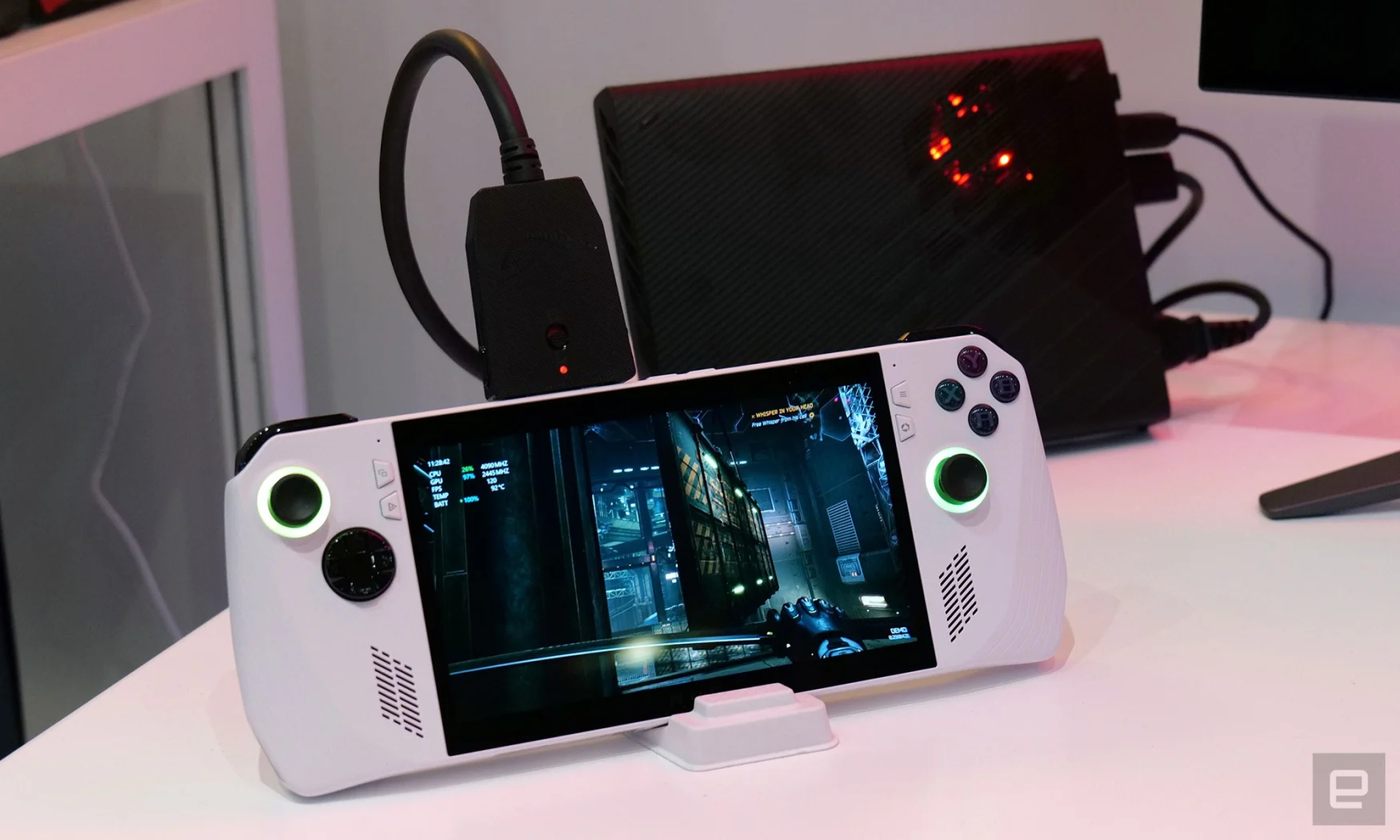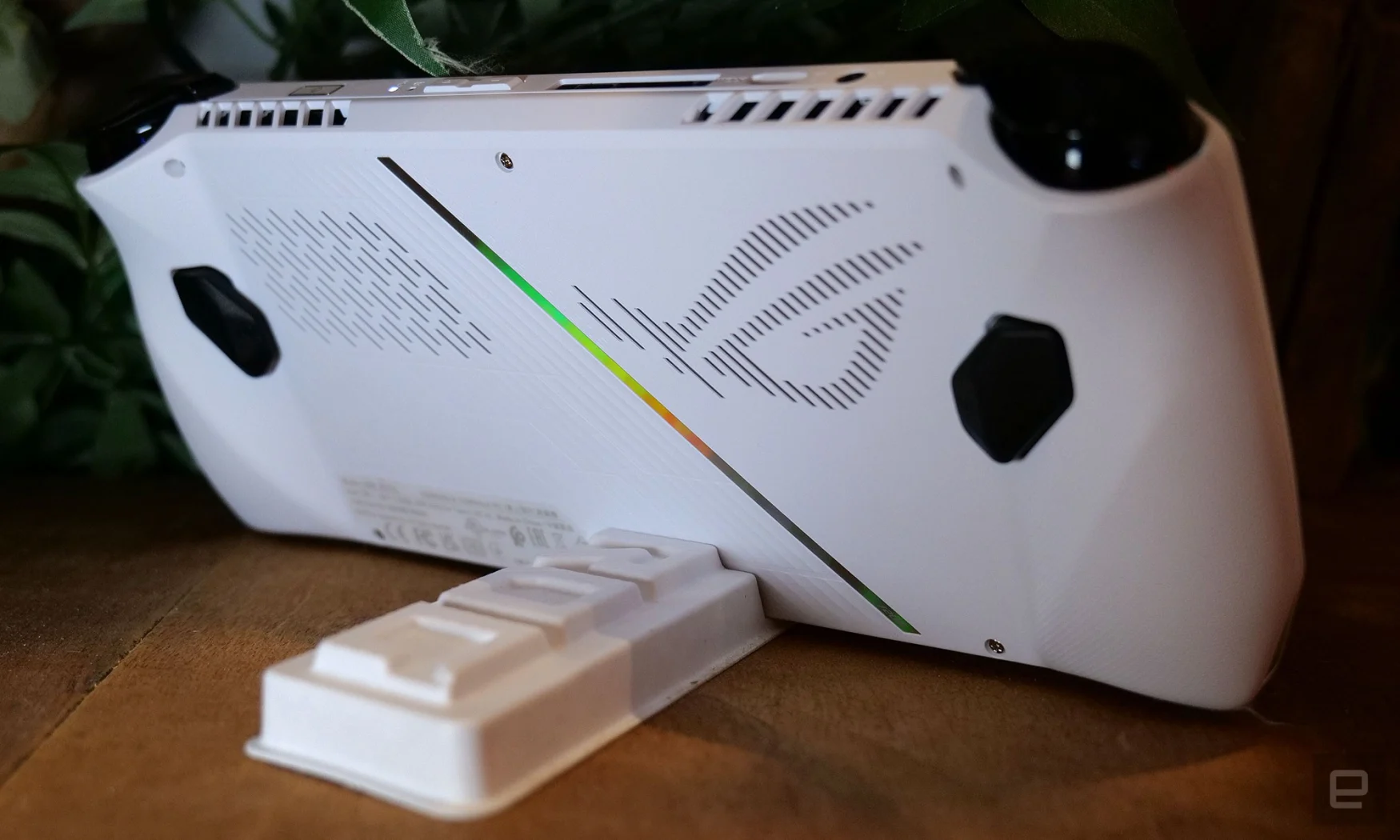ASUS ROG Ally hands-on: Arguably the most powerful gaming laptop PC yet
[ad_1]
When Valve released the Steam Deck last year, it completely reinvigorated the gaming laptop market. In the past six months, we’ve seen a new wave of rivals like the GPD Win 4 and Ayaneo 2. But now it’s ASUS’ turn with the ROG Ally and thanks to powerful specs, a fast display, and sleek design, we can You could be looking for the most powerful PC gaming handheld yet.
Now, before we go too deep, it’s important to mention that ASUS has yet to provide official pricing or availability for the ROG Ally, and we’re still waiting for clarity regarding some of its more detailed specifications. That is expected to happen on May 11 at its official launch. But from what I’ve had a chance to play so far, there’s a lot to get excited about.
Perhaps the most enticing thing about the Ally is its components. Not only does it feature a new Ryzen Z1 chip, which is a custom Zen 4/RDNA 3 APU designed specifically for portable gaming PCs, but it also sports a 7-inch 1080p display with 500 nits of brightness and a refresh rate of 120 Hz. That alone represents some very premium upgrades compared to the Steam Deck. And with ASUS claiming the ROG Ally is 50 to 100 percent more powerful than Valve’s laptop (depending on power settings), it just might have the performance to make that display really shine. With ASUS rounding out the ROG Ally kit with up to 16GB of RAM, a 512GB SSD, and a microSD card slot, there’s very little to complain about in terms of hardware.
Then there’s the display, which might just be the best display in this category. Colors were bright and rich and didn’t look washed out in any game I’ve played, which sometimes happens on Steam Deck. And while the panel is the same size as what you get on Valve’s machine, the extra resolution and that 120Hz refresh rate made games look sharper and smoother.

Photo by Sam Rutherford/Engadget
Another notable difference is that, unlike the Steam Deck, ROG Ally runs Windows 11, which ASUS says was a deliberate move to make sure gamers could play all their favorite titles from any of the major stores (Steam, Epic Game Store, Battle.net, etc.). On top of that, ASUS added some thoughtful software tweaks, including a customized version of its Armory Crate app along with a handy button to quickly toggle between hardware settings for things like power consumption, performance modes, and more. And even on the preview devices I used, ASUS’s software felt more responsive than similar apps on competitors like the Ayaneo 2.
As for its design, while ASUS isn’t really innovating much compared to other devices in the category, there are a number of small details that I appreciate. You get a familiar array of side and front buttons, with two macro buttons on the back (one on each side). At 608 grams, the Ally is slightly lighter than the Steam Deck (669 grams) and is also significantly thinner and less bulky. It doesn’t have big, chunky grips like some rivals, but ASUS says the angled contours on the side were specifically designed so the device sits in your hand when you rest your arms on a desk or table. My favorite nod to general usability is Ally’s quiet fans. I did notice that while the system can get a bit warm under load, even then it never came close to sounding like my Steam Deck, which makes a little whine almost every time the fans are spinning.
For those who want even more performance, ASUS included an XG Mobile port so you can connect the ROG Ally to one of the company’s docks of portable GPUs. Admittedly, I’m not sure I see the need to take a handheld PC and plug it into a large dock (even if it provides better performance). And since the cheapest XG Mobile dock is around $1000 (for an older 30-series card), it’s an expensive way to improve Ally’s performance. But for people who already own one of ASUS’ Flow series gaming laptops, it’s a nice added value.
All told, the only things you don’t really get on the Ally are integrated touchpads like on the Steam Deck or a second USB-C connector like on the Ayaneo 2. And while ASUS has opted for standard analog joysticks instead of Based on more sophisticated hall-effect magnetic sensors, the company teased that swapping out third-party joysticks is possible in the future.

Photo by Sam Rutherford/Engadget
Even though ROG Ally naturally draws a lot of comparisons between itself and the Steam Deck, I don’t think they’re actually direct competitors. This is because while ASUS has yet to reveal the official price, I expect the Ally to cost at least $800, which is double the price of a base Steam Deck. Instead, Ally seems to be a better version of Ayaneo 2. Not only is it more powerful, its software feels more polished, and since ASUS is a significantly larger company, I expect Ally to come with better customer support as well.
For people looking for a premium gaming handheld, the ROG Ally may have jumped to the top of the pack. She has pretty much the fastest components you can fit into a system this size. My only concern at this point is whether its 40Wh battery can deliver decent longevity while delivering solid performance. But more importantly, when I think about the category as a whole, it’s really encouraging to see more big names enter the space and put a spin on a rapidly growing class of devices.
[ad_2]